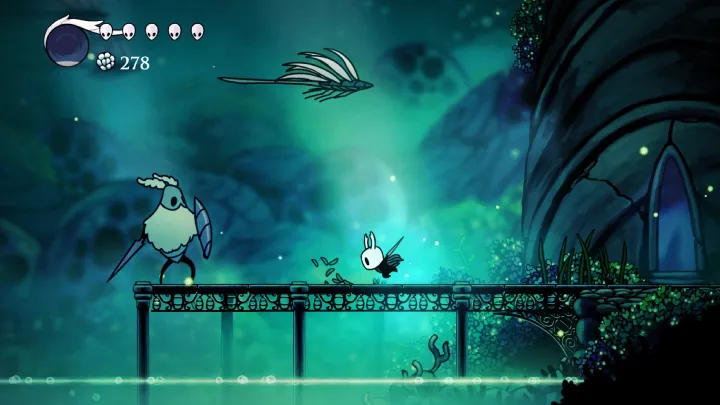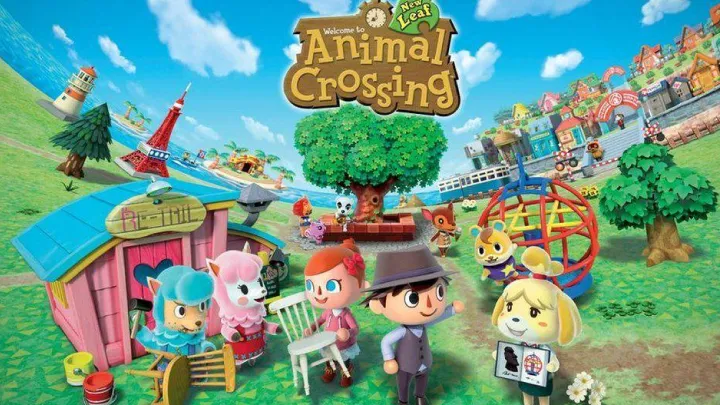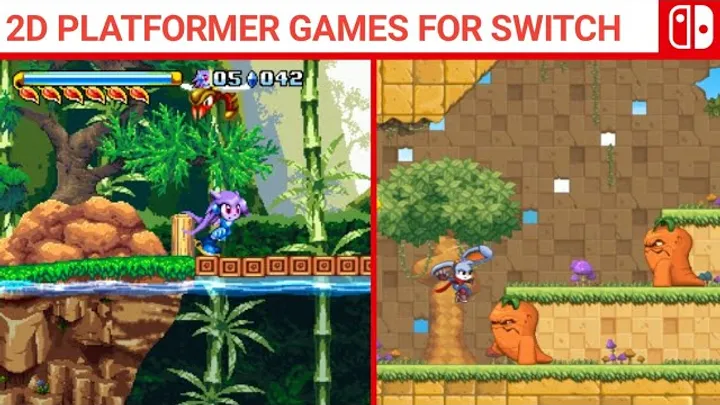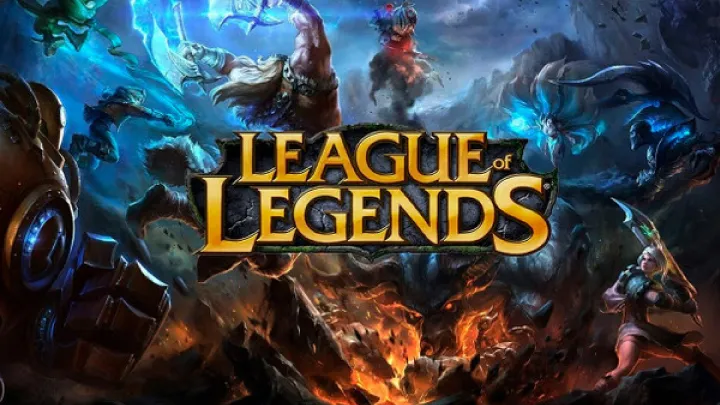
Hollow Knight, developed by Team Cherry, is a critically acclaimed Metroidvania that immerses players in the hauntingly beautiful world of Hallownest. The game’s intricate design, atmospheric storytelling, and challenging gameplay have captivated audiences since its release in 2017. One of the most profound themes explored in Hollow Knight is the issue of isolation—both physical and emotional—and the quest for connection amidst a world steeped in decay and loss. This article will examine how this theme manifests through the characters, environments, and gameplay mechanics, revealing the deep narrative layers that contribute to the game's emotional impact.
The Setting: A Kingdom in Decline
Hallownest’s Forgotten Legacy
Hollow Knight is set in the once-prosperous kingdom of Hallownest, a realm now shrouded in darkness and inhabited by various insects. The kingdom is rich in lore, showcasing a vibrant history that has fallen into ruin. The remnants of civilization—crumbling structures, faded murals, and ghostly inhabitants—paint a picture of a once-flourishing society now plagued by isolation and despair.
The world of Hallownest is not just a backdrop; it is a character in its own right, reflecting the themes of loss and isolation. As players traverse the desolate landscapes, they encounter the remnants of a society that has succumbed to a mysterious infection, symbolizing the decay of connection and community. This setting serves as a constant reminder of the fragility of relationships and the impact of isolation on a once-vibrant culture.
The Infection: A Catalyst for Isolation
Central to the narrative is the Infection, a mysterious force that spreads throughout Hallownest, corrupting its inhabitants and severing bonds between them. This phenomenon serves as a metaphor for emotional and social disconnection, illustrating how external forces can lead to isolation. As characters succumb to the Infection, they become shadows of their former selves, emphasizing the destructive impact of neglect and despair.
The Infection also creates a physical barrier within the game world, limiting access to certain areas and forcing players to confront the consequences of this decay. The struggle against the Infection becomes a quest not just for survival but for reconnection, as players seek to understand its origins and ultimately restore balance to Hallownest.
The Protagonist: The Knight's Journey
The Silent Hero
The protagonist, known simply as the Knight, embodies the theme of isolation through his silent demeanor and solitary quest. Unlike many video game heroes, the Knight does not speak, which adds layers of mystery to his character. This silence invites players to project their thoughts and feelings onto him, making the journey feel deeply personal and reflective.
As the Knight navigates Hallownest, he encounters various characters, each with their own stories of loss and isolation. His silence becomes a canvas for the player’s emotions, emphasizing the idea that sometimes the journey for connection is fraught with unspoken struggles. The Knight's quest is not just about defeating enemies; it is about seeking understanding and companionship in a world that has largely forgotten what it means to connect.
The Knight’s Growth
Throughout the game, the Knight undergoes significant growth, transforming from a lonely wanderer into a formidable force against the Infection. This evolution symbolizes the potential for connection and healing, even in the darkest of circumstances. As players collect new abilities and charms, they are not just enhancing their combat capabilities; they are also deepening their connection to the world and its inhabitants.
This growth is mirrored in the relationships the Knight forms with other characters. Each encounter provides an opportunity to learn more about Hallownest’s history and the impact of the Infection on its people. The Knight’s journey becomes a quest for not only physical strength but also emotional understanding, illustrating the importance of connection in overcoming isolation.
The Characters of Hallownest: Echoes of Isolation
The Forgotten Souls
Hollow Knight is populated by a diverse cast of characters, each representing different facets of isolation and connection. Many NPCs, such as Cornifer, the mapmaker, and Iselda, his partner, are trapped in their own cycles of loneliness, yearning for connection yet unable to break free from their circumstances. Their stories reflect the broader theme of isolation, highlighting how the characters have been affected by the decay of Hallownest.
For instance, Cornifer’s obsession with mapping the kingdom is a reflection of his desire to understand the world around him, even as it crumbles. His interactions with the Knight reveal a longing for companionship, as he shares snippets of his adventures while remaining rooted in his own isolated existence. This dynamic emphasizes the complexities of connection, as characters seek understanding but often remain trapped in their own narratives.
The Impact of Relationships
The relationships the Knight forms with these characters serve as a crucial element of the narrative. Through conversations and interactions, players gain insight into the broader implications of isolation within Hallownest. Characters like Zote the Mighty and Grubfather each provide unique perspectives on loneliness and the yearning for connection.
For example, Zote, despite his bravado, often finds himself in precarious situations, highlighting the fragility of self-importance in a world overrun by despair. His comedic attempts to assert dominance mask a deeper insecurity, making him a poignant representation of how isolation can manifest in different ways. The Knight’s interactions with Zote reveal that even those who appear strong may be struggling with their own feelings of disconnection.
The Gameplay: Isolation Through Mechanics
Exploration and Discovery
Hollow Knight’s gameplay mechanics are intricately designed to reflect the theme of isolation. The emphasis on exploration encourages players to traverse a vast, interconnected world filled with secrets and hidden paths. This journey serves as a metaphor for the search for connection, as players must navigate not only the physical landscape but also the emotional terrain of Hallownest.
As players uncover lore and interact with NPCs, they piece together the fragmented history of the kingdom. This exploration fosters a sense of discovery that mirrors the quest for connection—every new area reveals not just challenges but also stories of loss and resilience. The act of exploring becomes a means of reclaiming the past, underscoring the importance of understanding history in the pursuit of connection.
Combat as a Reflection of Isolation
Combat in Hollow Knight is challenging and requires strategic thinking, mirroring the struggle for connection in a world fraught with danger. Each enemy represents not just a physical threat but also a manifestation of the Infection’s impact on Hallownest. The Knight must confront these foes to progress, symbolizing the need to face one’s fears and the barriers that prevent connection.
The mechanics of combat also emphasize the theme of isolation. Players must learn patterns, adapt strategies, and develop skills to overcome obstacles. This process reflects the effort required to forge connections in a world where relationships can be fraught with difficulty. The Knight’s battles become not just physical confrontations but also emotional struggles against the forces that seek to isolate him from others.
The Role of Lore: Stories Interwoven with Isolation
The History of Hallownest
The lore of Hollow Knight is rich and deeply intertwined with the theme of isolation. Through environmental storytelling, players uncover the history of Hallownest and its inhabitants. The remnants of ancient civilizations, inscriptions, and murals reveal the kingdom’s past—a vibrant place now reduced to shadows and echoes.
Each area is filled with lore that reflects the impact of the Infection on the community. For instance, the City of Tears stands as a testament to the kingdom’s grandeur, now filled with sorrow and desolation. The narrative unfolds through exploration, encouraging players to piece together the story of Hallownest and its decline. This process emphasizes the importance of understanding history in the quest for connection, as the past informs the present.
The Tragic Stories of Inhabitants
The tragic tales of Hallownest’s inhabitants serve as poignant reminders of the consequences of isolation. Characters like The Hollow Knight and Radiance embody the struggle against the Infection, representing the battle between connection and disconnection. Their stories highlight the cyclical nature of isolation, as the desire for power and control leads to further alienation.
The Hollow Knight, in particular, encapsulates the tragic consequences of isolation. Once a vessel for the Radiance, he becomes a shadow of his former self, trapped in a cycle of despair. His story serves as a warning against the dangers of neglecting connection and the emotional toll that isolation can take. Through these narratives, players are invited to reflect on the broader implications of their choices and the importance of fostering connections.
The Final Confrontation: Resolution and Understanding
The Climax of the Journey
As players progress toward the climax of Hollow Knight, they confront the culmination of their journey—the battle against the Radiance. This confrontation represents not only a physical challenge but also an emotional reckoning. The Knight must face the embodiment of isolation and despair, ultimately challenging the forces that seek to divide and conquer.
This battle serves as a metaphor for the struggle against the Infection and the quest for connection. The Radiance represents the pervasive influence of isolation, and the Knight’s victory signifies the potential for healing and reconciliation. This climax is a powerful moment that encapsulates the themes of the game, emphasizing the importance of confronting one’s fears to foster connection.
The Resolution of Isolation
In the aftermath of the final confrontation, players witness the resolution of the Knight’s journey. The choices made throughout the game culminate in various endings, each reflecting the impact of isolation and the potential for connection. The endings serve as a poignant reminder that, while the journey may be fraught with challenges, the pursuit of understanding and companionship is ultimately worthwhile.
The Knight’s journey concludes not just with a victory over the Radiance but with a deeper understanding of the importance of connection. The relationships forged along the way and the lessons learned become integral to the Knight’s identity, illustrating that even in a world steeped in isolation, the quest for connection can lead to profound transformation.
Conclusion
Hollow Knight is a masterful exploration of isolation and the search for connection. Through its intricate world design, rich lore, and compelling characters, the game invites players to engage with the complexities of self-discovery and the impact of choices on personal and collective identity. The haunting beauty of Hallownest serves as a powerful backdrop for a narrative that resonates on emotional and philosophical levels.


















